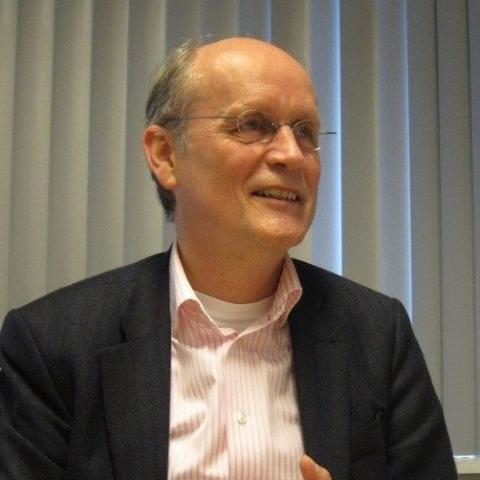Dutch labor market has a significant discrimination problem caused by the government
Sociologist and anthropologist Hans Siebers has conducted research on workplace discrimination for the past two decades, commissioned by two ministries, two provinces, five municipalities, the tax authority, and the police. He examined access to jobs, promotion opportunities, and daily exclusion, considering both employers and applicants, with and without migration backgrounds. Ahead of the International Day for the Elimination of Racial Discrimination on March 21, he discusses widespread workplace discrimination.
"In job application processes, individuals with a migration background, particularly non-Western, have 10 to 20 percent less chance of finding a job. Someone with a migration background, easily identifiable by factors like skin color or a headscarf, faces a double burden during applications. They must prove not only to be the best candidate but also that they are integrated, meeting cultural norms. Dutch nationals only face a single burden. However, the notion that integration is necessary to perform a job well is a lie. This has been propagated by the government and has nothing to do with being a good employee.
As a result, some individuals consistently face discrimination. Experiencing discrimination makes it harder to appear motivated, proactive, and extroverted in subsequent job applications. In one of my studies, I observed how this affected a man of Turkish descent applying for a position at a municipality. Despite repeatedly applying without success and then being invited for interviews, he approached cautiously, wondering if the selectors were truly open to him. In such scenarios, employers already have a bias against motivation and extroversion.

My conclusion from two decades of work is that the Dutch labor market has a significant discrimination problem due to nationalist ideologies promoted by government policies. The government is responsible for discrimination against individuals with migration backgrounds because of its strict migration and integration policies. This propagates the illusion that people with migration backgrounds are different from 'us,' fueling discrimination in the job market."
Discrimination is difficult to detect because nobody admits to doing it. How did you address this in your research?
"Discrimination can occur in two ways: access to scarce resources such as jobs, equal pay, and promotions, and in communicative contexts, such as conversations and interactions within society. Direct discrimination occurs when one's background is the explicit reason for not being hired. Indirect discrimination happens when criteria unrelated to work result in the non-selection or promotion of individuals with migration backgrounds. For instance, networking contacts can be a form of indirect discrimination, as newcomers to the Netherlands may have had fewer opportunities to establish such connections. Discriminators rarely admit to their actions, and victims may not always report it. My research involved over 500 interviews and numerous surveys, using both qualitative and quantitative methods.
Racism can be a source of discrimination, but it is not always the cause. On the contrary, what I encounter in my research in the labor market is mostly related to nationalism.
- Hans Siebers
Racism occurs when people are classified according to "races" with the misconception that they are characterized by biological or physical differences. And that there is a form of hierarchy whereby one "race" would be superior to another. Its origins paradoxically lie in the attempts from the late century to abolish slavery with the justification from the Enlightenment that all people are equal. Racism and discrimination are often lumped together. Racism can be a source of discrimination, but it is not always the cause. On the contrary, what I encounter in my research in the labor market is mostly related to nationalism.
We find manifestations of racism on social media, but that is very different from what is happening in society, including in the labor market. As a scientist, I need empirical evidence of racism in society and there is none. I do observe discrimination against people of immigrant background in the workplace. That is caused by nationalism, not racism.”
What measures did you propose to combat workplace discrimination?
"All those expensive awareness and cultural change training programs are entirely futile, as we now know. In 2017, I found that the municipality of Eindhoven discriminated against applicants with migration backgrounds. There was no structure in recruitment and selection procedures, nor in assessment. Criteria unrelated to work were used, such as whether there was a 'click' or assessing motivation, cultural fit, or likability. These had to be discarded. The municipality had to go back to basics: what knowledge and skills does an applicant need, what are the outcomes of their work, and the right procedures. Forget the rest. By removing surplus criteria, employers eliminate the main mechanisms that disadvantage people with migration backgrounds. And it improves business results. Organizations need to professionalize their methods.
I revisited Eindhoven in 2019 and 2022 to check, and discrimination had largely disappeared. This approach was also successful in Zuid-Holland province. However, it's an illusion to think this resolves the entire discrimination problem; it's very persistent, as seen in the tax authority and police. Especially if the government continues to promote nationalism. Misinformation has negative repercussions in the workplace."
Biography
Hans Siebers studied social sciences (anthropology, sociology), and history in Nijmegen and is an associate professor at Culture Studies at Tilburg University. He earned his Ph.D. for research on globalization and modernization among the Q'eqchi' people in Guatemala. His research and publications over the past 25 years have focused on issues of equal opportunities, inclusion, and discrimination in the labor market.
